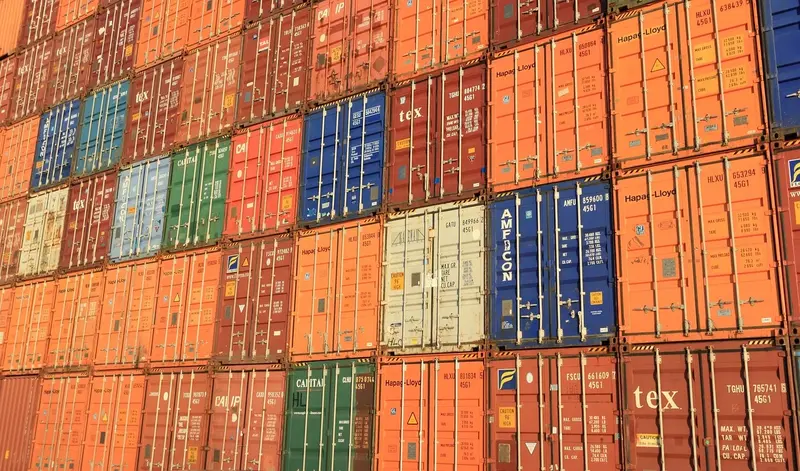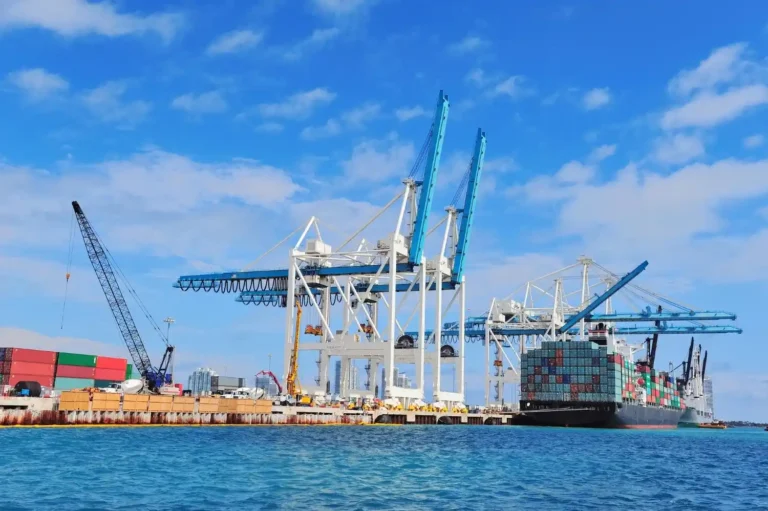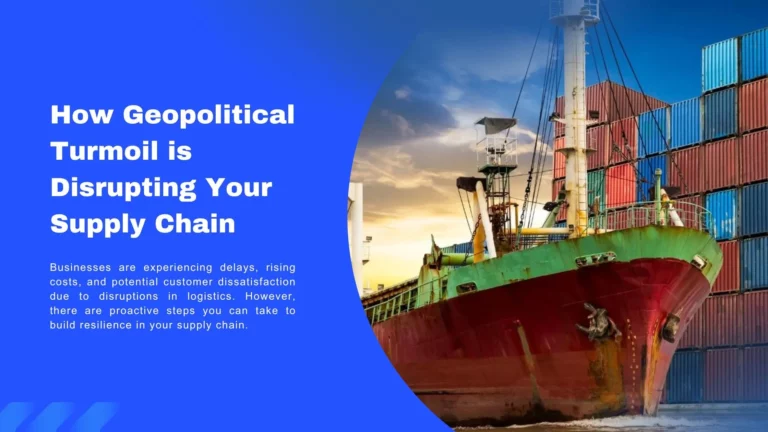The 15 Major Ports of Spain: Gateways of Commerce and Culture
Spain, which has an extraordinary cultural background, amazing panoramic scenery, and colorful cities, is lined with flexible ports that give merchandising and culture a platform. Located in the intersection of Europe, Africa, and the Americas, Spain’s major ports have always exerted a strong commercial and cultural influence, in the course of history, by favoring trade and the exchange of culture. In this comprehensive guide, we embark on a journey to discover 15 major ports of Spain and to understand their economic significance, technical advances, tourist attractions, and prospects for the future.
The Economic Engine of Spain: Key Figures and Facts
Before introducing the general effect of these maritime ports on the Spanish economy you should bear in mind the combined contribution of the ports as a whole. Current statistics indicate that the biggest of Spain’s ports make up a considerable fraction of the passenger and cargo volume traffic and thus are the main export and import facilities. The aggregated volume of handling cargo in the country’s ports not only keeps the domestic industries running but also bolsters Spain’s participation on the global scale.
A Closer Look at the 15 Major Ports of Spain
1. Port of Algeciras Bay (ESALG) – Andalusia
Source – Wikipedia
It is that enchanting port of Algeciras Bay that stands with its head held high amidst the rivers of idyllic Andalusia, crowning itself as the Spanish port with the largest tonnage of cargo. As its location is close to the Strait of Gibraltar, this places it at a gateway between the full traffic of the two continents leading to Europe and Africa. The modern infrastructure of its port and its exceptionally large number of shipping lanes places the port high among locations that are important for Mediterranean trade.
- Container traffic: 52 million TEUs (Approx)
- Cargo tonnage: 102 million metric tons per year
- One of the busiest ports in Europe
- Strategic location for international trade, connecting Europe, Africa, and Asia
- A major hub for container traffic, with modern facilities and extensive logistics infrastructure
- Top exports: Automobiles, machinery, and agricultural products
- Major trading partners: Morocco, China, United States
2. Port of Valencia (ESVLC) – Comunidad de Valencia
Source – Wikipedia
The Port of Valencia is proof of where the shipping power of Spain is focused. The reason why this port is so highly appreciated is that it is a well-known container terminal and it has a seamless connection to the international trade routes. Therefore, it plays a key role in the supply chain in Spain. Additionally, the Port of Valencia not only gives activities to its commercial operations but also attractions to its visitors who want to know about the region’s rich culture and past.
- Container traffic: 54 million TEUs (Approx)
- Cargo tonnage: 82 million metric tons per year
- One of the largest and busiest ports in the Mediterranean
- Key gateway for container traffic, handling a significant portion of Spain’s imports and exports
- Well-connected to major shipping routes, facilitating trade with Europe, Africa, and Asia
- Top exports: Chemicals, textiles, and agricultural products
- Major trading partners: China, United States, Algeria
3. Port of Barcelona (ESBCN) – Catalonia
Source – Wikipedia
This port’s attraction is that it is a multicultural trade zone of Catalonia. Consisting of various logistic services from different companies, the port is also the busiest port to the cruise terminal serving so many visitors every year. As the city embraces its rich heritage, visitors are keen to discover intriguing architectural details and also to enjoy various dining options.
- Container traffic: Approximately 35 million TEUs
- Cargo tonnage: 67 million metric tons per year
- One of the most important ports in the Mediterranean region
- Handles diverse cargo types, including containers, automobiles, and general cargo
- Major cruise port, serving as a popular destination for Mediterranean cruises
- Top exports: Machinery, vehicles, and electronics
- Major trading partners: China, United States, Algeria
4. Port of Bilbao (ESBIO) – Basque Country
Source – BilbaoPort
Following the Basque Country’s coastlines to the Bay of Biscay, you would find the Port of Bilbao, an industrial operating facility. Top among the others, this port is acknowledged for its highly specialized cargo operations, especially in the steel and automotive sectors. The manufacturing supply chain of Spain maintains this port as a big player. Moreover, it is only a privileged few minutes away from the vaguely near Bilbao cultural and trading capital.
- Container traffic: Approximately 600,000 TEUs
- Cargo tonnage: 35 million metric tons per year
- Strategic port for the industrial and economic development of the region
- Handles various types of cargo, including bulk, general, and containerized cargo
- Well-connected to inland transportation networks, facilitating trade with Europe
- Top exports: Steel, machinery, and chemicals
- Major trading partners: United States, United Kingdom, Germany
5.. Port of Santander (ESSDR) – Cantabria
Source – CruiseMapper
The Port of Santander, located in Cantabria, Spain, is a vital maritime hub known for its strategic position on the Bay of Santander. It handles various vessels and cargo types, facilitating trade domestically and internationally. With modern infrastructure, it supports the local economy by importing/exporting goods and aiding the fishing industry. Committed to sustainability, the port minimizes its environmental impact. Overall, it plays a crucial role in Cantabria’s economic development and regional connectivity.
- Container traffic: Approximately 300,000 TEUs
- Cargo tonnage: 23 million metric tons per year
- A strategic port on the Bay of Santander
- Facilitates both domestic and international trade, handling diverse cargo types
- Supports the local fishing industry and contributes to the region’s economic development
- Top exports: Fish products, machinery, and chemicals
- Major trading partners: United Kingdom, Netherlands, Belgium
6. Port of Las Palmas (ESLPA) – Canary Islands
Source – Wikipedia
The Port of Las Palmas, located on the Canary Islands and caressed by the warm rays of the sun, is a symbol of Spain’s stylish maritime heritage. As a gateway to the Atlantic Ocean, the port has already served as a trade corridor for Europe, Africa, and the Americas. In this sense, its well-developed trade ports go hand in hand with untouched beaches to attract both those who seek business and those who are looking for a good tan and recreation.
- Container traffic: Approximately 12 million TEUs
- Cargo tonnage: 23 million metric tons per year
- One of the main ports in the Atlantic Ocean
- An important hub for maritime trade between Europe, Africa, and the Americas
- Handles various types of cargo and serves as a bunkering destination for ships
- Top exports: Agricultural products, fuels, and manufactured goods
- Major trading partners: Spain (Mainland), China, Saudi Arabia
7. Port of Cartagena (ESCRT) – Region of Murcia
Source – Wikipedia
The port of Cartagena is one such window into the rich history of Spain. This port can very well be a reminder of the ancient ruins as well as the modern shipping facilities; while there is obvious evidence of the traditional and the contemporary, they do not clash with one another. Its position on the Mediterranean coast is of strategic importance, therefore it is among the major players in regional trade. The access of tourists to its multiple historical and natural attractions defines it as a magnet.
- Container traffic: Approximately 600,000 TEUs
- Cargo tonnage: 33 million metric tons per year
- Strategic port with modern facilities
- Handles diverse cargo types, including containers, bulk, and general cargo
- Plays a key role in the regional economy and international trade
- Top exports: Chemicals, agricultural products, and minerals
- Major trading partners: United Kingdom, United States, China
8. Port of Sagunto (ESSAG) – Valencia
Source – ValenciaPort
Situated on Spain’s eastern shore, in proximity to the city of Valencia, the Port of Sagunto is a very important maritime gateway to the industrial and commercial activities of the area. It provides specialized berths for handling various types of cargo like iron and steel products, grains or bulk materials, and containers among others. The port is situated in a strategic place, which makes it possible to connect different Mediterranean ports and strengthen regional competitiveness in the international market. Besides, the Hydrocarbons port of Sagunto acts also as a strategic logistic hub for industrial sectors like steel manufacturing, automotive, and chemical processing.
- Container traffic: Approximately 400,000 TEUs
- Cargo tonnage: 19 million metric tons per year
- Important port for bulk cargo, particularly iron ore and steel products
- Well-connected to road and rail networks, facilitating the transportation of goods
- Supports industrial activities in the region
- Top exports: Steel, chemicals, and construction materials
- Major trading partners: Algeria, Italy, United States
9. Port of Ferrol (ESFER) – Galicia
Source – Wikipedia
Docked amongst the lush valleys and rolling hills of Galicia, the Port of Ferrol stands out as an oasis of repose in its crowded harbor. Famous because of its shipbuilding tradition and maritime competencies, a port in Spain that is one of the cornerstones of its naval industry can be said to be this. Along with industrial power, it provides tourists an opportunity to wander the streets of historical landmarks and encapsulate the sea-oriented culture of the particular region.
- Container traffic: Approximately 200,000 TEUs
- Cargo tonnage: 15 million metric tons per year
- Strategic port with facilities for diverse cargo types
- Supports industrial and commercial activities in the region
- Contributes to the economic development of Galicia
- Top exports: Steel, machinery, and seafood products
- Major trading partners: United States, United Kingdom, France
10. Port of Huelva (ESHUE) – Andalusia
Source – Wikipedia
The Port of Huelva’s excellent terminals are flexible and handle a wide variety of cargoes, associated with minerals, chemicals, and agricultural products. As a consequence, it also makes the Cádiz perfect for the demand of eco-tourists who need natural sights like the Doñana National Park.
- Container traffic: Approximately 300,000 TEUs
- Cargo tonnage: 25 million metric tons per year
- An important port for bulk cargo, particularly minerals and petrochemicals
- Handles diverse cargo types, including containers and general cargo
- Plays a key role in the regional economy and international trade
- Top exports: Chemicals, minerals, and agricultural products
- Major trading partners: United States, Spain (Mainland), Netherlands
11. Port of Castellón (ESCSA) – Comunidad de Valencia
Source – PortCastello
With its embarkation in the center of the Valencian Community, the Port of Castellon exhibits one of Spain’s marine supremacy. The port is advantageously situated on account of its comprehensively autonomous infrastructure and efficient logistics operations. This port is the main export-oriented industry conducting trade in the Asia Pacific region. In addition, it features scenic beaches and landmarks to be explored, which makes it appealing both for relaxation and exploration enthusiasts.
- Container traffic: Approximately 400,000 TEUs
- Cargo tonnage: 20 million metric tons per year
- Handles diverse cargo types, including bulk, general, and containerized cargo
- Supports industrial and commercial activities in the region
- Well-connected to transportation networks, facilitating trade with Europe and beyond
- Top exports: Chemicals, ceramics, and agricultural products
- Major trading partners: Algeria, Italy, France
12. Port of A Coruña (ESLCG) – Galicia
Source – MarineInsight
Located in Galicia, Spain, the Port of A Coruña is a significant maritime facility serving the region. Positioned strategically, it handles diverse vessels and cargo types, facilitating both domestic and international trade. With modern infrastructure, it supports the local economy by importing and exporting goods. Additionally, the port contributes to Galicia’s fishing industry. Committed to sustainability, it implements measures to minimize environmental impact. Overall, the Port of A Coruña plays a crucial role in the economic development and connectivity of Galicia.
- Container traffic: Approximately 300,000 TEUs
- Cargo tonnage: 17 million metric tons per year
- An important port for maritime trade and the fishing industry
- Handles diverse cargo types and supports industrial activities in the region
- Contributes to the economic development of Galicia
- Top exports: Seafood products, machinery, and chemicals
- Major trading partners: United States, United Kingdom, France
Read more: Top 15 Busiest Ports in the World – Updated list
13. Port of Vigo (ESVGO) – Galicia
Source – Wikipedia
The harbor of Vigo is located in the northwest of Spain and is recognized for its intensive fishing market which is even reckoned to be one of the busiest in the world. It holds a key place as the major gateway for seafood shipments in Spain, and every year a large number of Spanish sea-extracted seafood is transited through its ports. Besides the additional function, the bay handles a variety of goods like bags, bulk cargo, and vehicles. The port infrastructures that serve Vigo are equipped with state-of-the-art facilities, technological advancements, and systems that respond to the rising demand for maritime transportation and trading.
- Container traffic: Approximately 500,000 TEUs
- Cargo tonnage: 20 million metric tons per year
- Major port for the fishing industry and seafood trade
- Handles diverse cargo types and supports industrial activities
- Contributes significantly to the economy of Galicia
- Top exports: Seafood products, automobiles, and textiles
- Major trading partners: Spain (Mainland), United States, France
14. Port of Ibiza (ESIBZ) – Balearic Islands
Source – FerryHopper
Located in the Balearic Islands of Spain, the Port of Ibiza serves as a vital maritime hub for the island of Ibiza. It features modern facilities capable of accommodating diverse vessels, including ferries, cruise ships, yachts, and cargo carriers. The port offers passenger services, connecting Ibiza to other Balearic Islands and mainland Spain via ferry routes. Additionally, it handles a significant cargo volume, facilitating trade and contributing to the local economy. With its waterfront promenades, restaurants, and recreational amenities, the Port of Ibiza also attracts tourists, enhancing the island’s tourism industry. The port operates within Spanish and EU regulatory frameworks, adhering to standards for maritime transportation, safety, security, and environmental protection.
- Container traffic: Approximately 200,000 TEUs
- Cargo tonnage: 8 million metric tons per year
- An important port for tourism and maritime trade
- Handles diverse cargo types and serves as a port of call for cruise ships
- Contributes to the tourism industry of the Balearic Islands
- Top exports: Textiles, food products, and beverages
- Major trading partners: Spain (mainland), Italy, France
15. Port of Seville (ESSVQ) – Andalusia
Source – Wikipedia
Located in Andalusia (Southern Spain), at the confluence of the Guadalquivir River and its mouth to the Atlantic Ocean (Atlantic Ocean), and, undoubtedly, the only inland port of Spain with a direct connection to the Atlantic Ocean. It mainly targets the export of different bulk commodities like grain, mineral petroleum products, etc. The Port’s strategic location and demand-based inland waterway links make it more important as a transport hub for freight trade with other regions of Spain as well as neighboring countries. Moreover, the Port of Sevilla by doing so underpins the use of waterways in the area and multimodal mobility there.
- Container traffic: Approximately 100,000 TEUs
- Cargo tonnage: 4 million metric tons per year
- Inland port situated on the Guadalquivir River
- Handles diverse cargo types, particularly bulk and containers
- Facilitates transportation of goods to and from the interior regions of Spain
- Top exports: Agricultural products, chemicals, and minerals
- Major trading partners: United States, China, Netherlands
The Strategic Significance of Spanish Ports in Global Trade
Spanish ports are experiencing higher levels of internationalization with their critical role in running international trade. With the increasing role of serving as gateways for global transportation lines or being the communication channels between major trade conduits, ports play irreplaceable roles in global trade. In addition, other countries and international organizations play a crucial role by way of demonstrating the great fact that Spain is a powerful country indeed.
Technological Advancements and Sustainability Efforts
The maritime port industry needs to adapt to increasing demands so that Spanish ports progressively push toward introducing technological inventions, as well as sustainable initiatives are urgently needed. With the adoption of green ports technology, smart ports implementation of green papers leads to a more efficient and green future. The optimization of operations and the reduction of carbon emissions are not only increasing Spanish competitiveness, but also they are preserving our planet as the best and new generation.
Beyond Cargo: Spanish Ports as Tourist Destinations
Although it is generally believed that the main purpose of Spanish seaports is conducive to trade, they are also the most active hub for tourists. The sightseeing and VIP journey to Spanish ports may be diverse on several fronts either trips to admire heritage sites, indulge in gastronomy, or sun basking on pristine beaches. Visitors would always appreciate the shoulder rub at Spanish ports. Whether the streets of Barcelona are as unwelcoming to the lonely, the port of each can have and offer a specific combination of culture, trade, and natural beauty that is different from the other.
Challenges and Future Prospects
Spanish ports have a lot of positive forces but at the same time, they are facing a lot of capacity problems, community problems, and uncertainty about their policy direction. With the world’s trading route systems constantly being reconfigured and the technologies undergoing advancements, these ports have to be resilient and flexible to stay competitive in unpredictable industries. Ports can address these challenges by investing in upgrades of infrastructure, implementing ecological tactics, and a culture of innovation. In this way, Spanish ports will emerge stronger than ever.
Conclusion: Spain’s Ports as Pillars of Progress and Culture
We can say that not only do the Spanish big ports stand for international economic circulation but also they are abodes to social advancement and culture. Ports in Spain have multiple functions to improve the economy and international trade and to demonstrate the nation’s heritage and splendid nature. These functions have a credence in the national public life abroad. Looking at the future, Spanish ports will come to act as engines for development and innovation facilitating the movement of people, goods, and ideas across borders and ocean regions. Your visit, regardless of the purpose, will still be full of discoveries of Major ports of Spain. Weights are given to different types of visitors, tourists, and maritime enthusiasts. Let’s wander from one place to another to admire the beautiful kaleidoscope which is the Spanish sea scenery.






